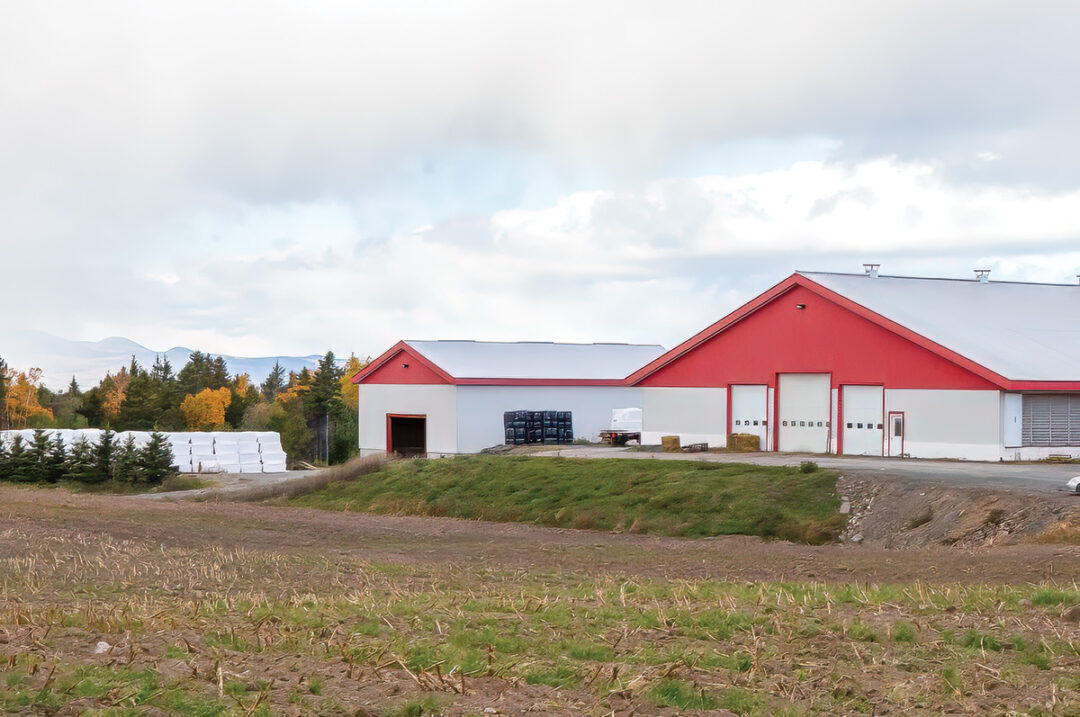Ensuring proper ventilation in dairy barns is paramount for the health and productivity of dairy cattle. While the necessity of maintaining adequate ventilation during the extremes of summer and winter is well recognized, the transitional seasons of spring and fall present unique challenges that often are overlooked. These off-season periods can significantly impact barn climate and herd health if not managed effectively.
Ventilation in dairy barns is not just about keeping cows cool in the summer and warm in the winter. It plays a crucial role in regulating temperature, controlling humidity, removing contaminants like ammonia and carbon dioxide, and ensuring a steady supply of fresh air to support animal health. Effective ventilation is essential for optimizing milk production and maintaining animal welfare. However, the spring and fall seasons bring fluctuating temperatures, varying humidity levels and changing wind patterns, complicating the task of maintaining a consistent barn climate.
Spring and fall are characterized by sudden and unpredictable temperature changes. One day might be warm and sunny, while the next could be cool and damp. These fluctuations can stress dairy cows, weakening their immune systems and making them more susceptible to illnesses. The transition from a warm day to a cold night can be particularly stressful, causing cows to expend additional energy to maintain their body temperature, which can negatively impact milk production.
The changing weather patterns of spring and fall can also lead to inconsistent airflow within the barn. Wind directions and speeds can vary greatly, causing areas of the barn to experience poor ventilation. Stagnant air can lead to the buildup of harmful gases like ammonia, which can irritate the respiratory systems of the cows and contribute to the spread of respiratory diseases. Moreover, poor airflow can result in uneven distribution of temperature and humidity.
Humidity levels in spring and fall can be unpredictable, adding another layer of complexity to barn ventilation. High humidity can lead to moisture accumulation on barn surfaces, bedding and feed, creating ideal conditions for the growth of mold and bacteria. These pathogens can cause a range of health issues for dairy cows, from respiratory infections to digestive problems. On the other hand, low humidity can lead to dry, dusty conditions that also irritate the respiratory system and increase the risk of disease.
The transitional seasons can create environments that are conducive to the spread of pathogens. Inconsistent temperatures and humidity levels can weaken cows' immune systems, making them more vulnerable to infections. Additionally, damp, warm conditions can promote the growth of bacteria and mold, further increasing the risk of disease outbreaks. Effective ventilation is essential to mitigate these risks by maintaining a stable environment that supports animal health.
Regularly monitor barn conditions
One of the most important steps dairy producers can take to manage off-season ventilation is to continuously monitor barn conditions and adjust as needed. Installing sensors to track temperature, humidity and air quality can provide valuable data that can inform ventilation strategies.
Producers should be prepared to adjust ventilation settings frequently in response to changing weather conditions, ensuring that the barn environment remains stable and comfortable for the cows. Investing in a flexible ventilation system that can adapt to varying conditions is crucial for managing off-season challenges.
Natural ventilation, which relies on the natural movement of air through openings in the barn, can be effective during mild weather but may need to be supplemented with mechanical ventilation during periods of extreme temperature fluctuations. Circulation fans, exhaust fans and adjustable vents can help maintain consistent airflow and prevent the buildup of harmful gases and moisture.
Optimal air changes per hour during the off-season
To achieve optimal air quality, dairy barns should aim for an air exchange rate of four to eight air changes per hour (ACH) during mild weather conditions. This rate helps to ensure stale air is regularly replaced with fresh air, reducing the concentration of contaminants and maintaining a healthy environment. During colder periods within the off-season, maintaining at least four ACH is recommended to ensure adequate air quality while minimizing heat loss. It should also be noted that air change rates are dependent on the stocking density of the building, and ACH values alone are not a valid indicator of effective ventilation.
Proper insulation and barn design
Proper insulation and barn design can also play a significant role in maintaining a stable environment during the off-season. Insulating walls and roofs can help moderate temperature fluctuations and reduce the need for additional heating or cooling. Barns should be designed to facilitate natural airflow, with strategically placed vents and openings that promote ventilation while protecting against drafts and excessive wind. Additionally, incorporating features like overhangs and eaves can help protect the barn interior from rain and reduce moisture buildup.
Airspeed
Airspeed within the barn is another critical factor. For effective ventilation, the airspeed should be maintained between 60 to 100 feet per minute (fpm) at the cow level. This range ensures adequate airflow to remove moisture and contaminants without causing drafts that could stress the cows.
Regular maintenance of ventilation systems is essential to ensure their effectiveness. Cleaning fans, vents and exhaust systems can prevent the buildup of dust and debris that can impede airflow. Producers should also inspect and repair any damage to barn structures, such as leaks or gaps, that can affect ventilation and contribute to moisture buildup. Keeping ventilation systems in good working order is crucial for maintaining a healthy barn environment during the off-season.
Off-season ventilation in dairy barns presents unique challenges that require careful management to ensure a healthy environment for dairy cows. Temperature fluctuations, inconsistent airflow, unpredictable humidity and the risk of pathogen spread are all issues dairy producers must address to maintain optimal barn conditions.
By continuously monitoring barn conditions, investing in flexible ventilation systems, properly insulating and designing barns, and performing regular maintenance, dairy producers can mitigate the pitfalls associated with off-season ventilation and support the health and productivity of their herds.
Maintaining a stable, comfortable environment year-round is essential for optimizing milk production and ensuring the welfare of dairy cows, ultimately contributing to the success of the dairy operation.











